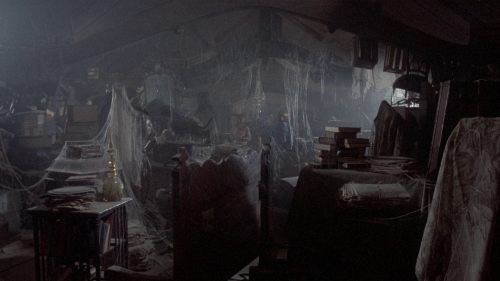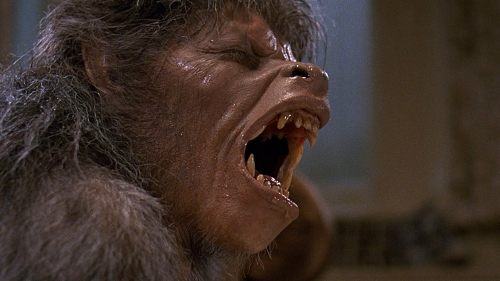(Un)Familiar Vampires: Michio Yamamoto’s BLOODTHIRSTY TRILOGY (1970 - 1974)
Michio Yamamoto had a rather peculiar filmmaking career path. Yamamoto entered Toho Studios in ‘56, and almost immediately became Akira Kurosawa's assistant director on Throne of Blood ('57), before working for Kurosawa's successor, Kihachi Okamoto. Under Okamoto, Yamamoto helped helm social satires and samurai action flicks, before crafting dramas for Japanese television during the ‘60s. In fact, the journeyman only made six features – beginning with the action diversion Resurrection of the Beast ('69) – three of which comprise The Bloodthirsty Trilogy (’70 – ’74): a barely coupled trio of vampire larks that superficially act as Toho's equivalent to the British horror melodramas popularized the world over by Hammer Studios.
In fairness, The Bloodthirsty Trilogy was never truly intended to be a series, as they're only linked by the director, writer (Ei Ogawa having co-penned each entry), and a collection of actors (Shin Kishida's pancake-makeup take on the Count being the limited collection's most notable unifier). Toho actually re-cut and restructured the movies to resemble one another, with titles Lake of Dracula ('71) and Evil of Dracula ('74) being obvious nods to the Christopher Lee-led counterparts. Yet the movies themselves are actually self-contained narratives, with tragically defined endings, and no real recurring characters (The Vampire Doll ['70] totally devoid of a Drac stand-in). Sure, there are stylistic tics that tie them together – as the furniture, lightning flashes and swirls of thick fog make it clear what era they're riffing on – but Yamamoto’s films are also distinctly of their culture and times; the players and locales are modern, despite the Gothic window dressing. So, while The Bloodthirsty Trilogy is undoubtedly drawing from Hammer, they're also paying tribute to a homegrown industry, particularly late ‘50s Shintoho works (such as Nakagawa Nobuo: The Lady Vampire ['59]).
For years, Yamamoto's vampire films toiled away in obscurity, only known commodities to the hardest core cult film fans. Thankfully, Arrow Home Video has restored and released these curiosities for a new generation of crate diggers to discover and evangelize about, in hopes of spreading the gospel regarding this bizarre, beguiling trio of horror films...
*****

The Vampire Doll [1970] (w. Hiroshi Nagano & Ei Ogawa)
While The Vampire Doll is often held up as Toho’s answer to Hammer’s atmospheric horror - and the viewer can definitely sense that influence in every hyper-stylized frame - it almost feels more directly connected to Eurosleaze black and white supernatural dronecore like Castle of Blood ('64), or any of the other Gothic Italian imports that starred Barbara Steele. Either way, the initial entry into Yamamoto's The Bloodthirsty Trilogy is 71 minutes of hypnotic, textured, haunted house histrionics, almost playfully sluggish as it traps you inside its bizarre mansion of terror. By the time we reach the rather shocking climax, there's no escaping its rather upsetting grasp.

Lake of Dracula [1971] (w. Ei Ogawa & Masaru Takesue)
Arguably a much better late era Hammer riff than The Vampire Doll, Lake of Dracula still skews closer to a Toho-produced Salem's Lot ('79) precursor. An Old World vamp invades a cozy, modern village, terrorizing and feeding off the blood of the few who call it home. Beautiful women become undead brides, wed on the shore, as Yamamoto captures the titular body of water with surrealist flair, transforming the idyllic pool into Hell's inland sea. Naturally, a woman’s psychedelically recalled childhood trauma holds the key to solving the entire mystery, as dreams of dogs breaking from their leash and dashing into the distance will lead us into the vampire's embrace. However, a key unifying element to The Bloodthirsty Trilogy - which also happens to the lend these movies all of their "fun" - emerges in the form of amateur sleuths, snooping around old dusty mansions until they discover their supernatural threat. As much as Yamamoto's movies will remind astute horror fans of their British cousins, The Vampire Doll and the director's two Dracula pictures almost play like live-action Scooby Doo! mysteries, only there's no mask to rip off the central fiend at the end of each. These monsters are real, infecting the area like a virus as they drink the blood of their prey and choose new lovers to live with them for all of eternity.

Evil of Dracula [1974] (w. Ei Ogawa & Masaru Takesue)
The best of Yamamoto’s Bloodthirsty Trilogy - or, at the very least, the most purely entertaining - Evil of Dracula recasts Lake's central vampire as a girls’ school principal who takes students as his brides. Yamamoto - along with frequent series writers Ei Ogawa and Masaru Takesue - combines youth film spunk (think: the Stray Cat Rock series*) with a shadowy perviness absent from the previous two pictures (strangely enough, there's little actual sex or nudity in these vampire tales until this entry). Once Yamamoto amalgamates this tone with all the elements that made both The Vampire Doll and Lake of Dracula so memorable - a spooky locale, an investigative protagonist, lurid carnal undertones - you're gifted 84 minutes of poppy, fast-paced horror. As far as overlook curios go, these are some of the very best, preserved with loving care so that new fans can get lost in the unsung Japanese master's idiosyncratic yet accessible trio of intoxicating vampire horror shows.



